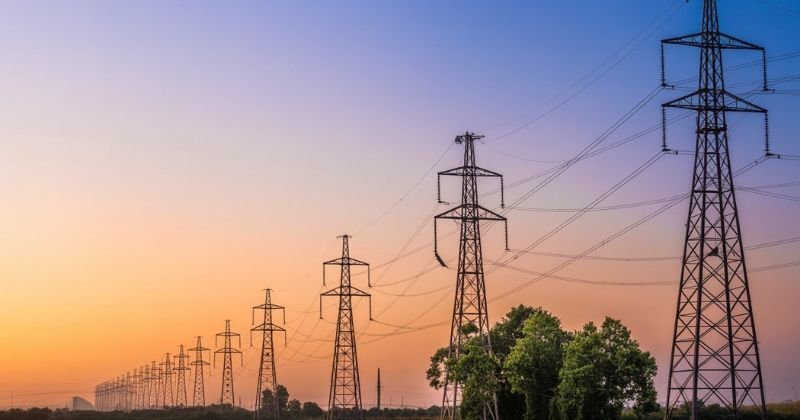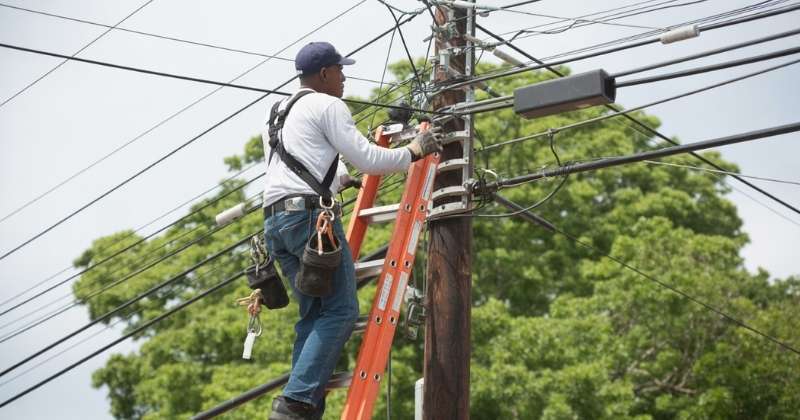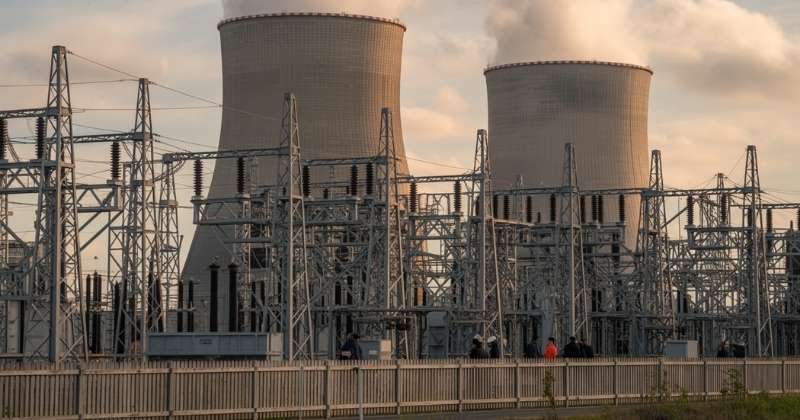
South Africa’s energy regulator has agreed to permit Eskom to increase electricity tariffs at a higher rate than what was originally allowed, following a settlement worth R54 billion. This outcome, which comes after lengthy disputes, is expected to add significant pressure to inflation and risks driving away even more consumers at a time when electricity demand has already been declining. This escalation represents yet another turning point in South Africa’s energy story, as households continue to juggle between unreliable service, alternative energy costs, and now higher official tariffs that threaten affordability even further.
Key Takeaways
- Massive Tariff Increase Approved: Eskom has secured a R54 billion settlement with Nersa, allowing electricity prices to rise by 8.76% from April 2025 and again by 8.83% in 2027, far above the central bank’s inflation forecasts.
- Economic and Inflation Risks: Higher tariffs are expected to fuel inflation, limit the Reserve Bank’s ability to cut interest rates, and squeeze both households and businesses already under financial strain.
- Criticism and Public Backlash: Experts and opposition parties argue the decision unfairly rewards Eskom’s inefficiencies, while customers continue to pay more despite declining electricity sales and growing investment in alternatives like solar.
About Arcadia Finance
Get the funds you need through Arcadia Finance. With no application fees and access to 19 NCR-compliant lenders, you’ll benefit from a seamless process and reliable loan options tailored to your situation.
Price Adjustment and Court Challenge
The settlement represents a major win for the state-owned electricity supplier, which earlier challenged a decision by the National Energy Regulator of South Africa (Nersa) issued in January. As a result, electricity prices will now climb by 8.76 percent for the financial year beginning on 1 April. This is a marked increase compared with the previously approved hike of 5.36 percent. Nersa confirmed this in a statement released on Wednesday evening. For ordinary South Africans, this difference between the two figures translates into hundreds of rand more on monthly bills, and for businesses, it means squeezed profit margins in an already high-cost environment.
Impact on Inflation
The revised increase goes far beyond the forecast of the South African Reserve Bank, which had anticipated consumer inflation to average 3.3 percent in both 2025 and 2026. The regulator’s ruling therefore places additional strain on the central bank’s monetary policy, leaving it with less flexibility to lower interest rates in the near term. The higher costs could suppress economic activity by raising expenses for both businesses and households. Economists caution that inflation is already proving sticky in areas such as food and transport, and this additional shock from electricity may ripple across the economy by raising the cost of goods and services from supermarkets to manufacturing plants.

Monetary Policy Constraints
With inflationary pressures intensifying, the Reserve Bank may be forced to reconsider its current policy trajectory. Economists suggest that the increase in tariffs will erode disposable income and narrow the profit margins of companies operating in South Africa. Households, already facing constrained budgets, will see less spare cash available for consumption, which could further dampen growth prospects.
This creates a difficult balancing act for the central bank: cutting rates risks fanning inflation, while keeping them high risks slowing an economy already struggling with unemployment, fragile business confidence, and a heavy debt burden on consumers.
Recent Rate Cuts and Market Response
The central bank lowered its benchmark lending rate by 25 basis points last month, bringing it down to 7 percent. Money markets are currently anticipating that the rate will remain steady until March, when there may be scope for another reduction of 25 basis points. In financial markets, government bonds recorded small gains on Thursday, with yields on the ten-year security declining marginally by two basis points to 9.57 percent. The rand currency remained stable during the session. Traders view this as a sign that financial markets are adopting a wait-and-see approach, but they remain wary that persistent tariff-driven inflation could force the central bank back into a more hawkish position later in the year.
Eskom’s Operational Situation
Eskom did not immediately provide a formal response to requests for comment. Over the past two years, the utility has managed to prevent the scale of rolling blackouts that had previously damaged the economy by improving the reliability of its coal-fired generation fleet and stabilising the national grid. However, critics argue that this improvement has come at a financial cost that consumers are ultimately paying for, with efficiency gains overshadowed by expensive maintenance and operational inefficiencies that remain entrenched.
The government is continuing with its initiative to separate Eskom into three entities covering transmission, generation and distribution. This restructuring aims to create space for private energy producers who may be able to deliver cheaper electricity. At the same time, South African households and businesses have increasingly invested in solar energy solutions, particularly during periods of persistent load shedding. This trend has reduced reliance on Eskom’s supply and lowered demand.
The rapid uptake of rooftop solar, battery storage and backup generators reflects a growing shift away from dependence on a single utility, signalling a potential long-term structural decline in Eskom’s customer base if reforms and efficiencies are not urgently implemented.
Falling Electricity Sales
Between 2020 and 2024, Eskom experienced a reduction of 11 percent in the volume of electricity sold to end customers. The settlement decision follows Eskom’s argument in court that Nersa’s January tariff determination relied on flawed data, leaving the utility with a revenue gap of R107 billion. This decline in sales, paired with rising tariffs, paints a concerning picture: Eskom is charging more while selling less, an unsustainable cycle that risks further alienating paying customers and encouraging energy alternatives or illegal connections.
Future Tariff Increases
Alongside the immediate settlement, Nersa confirmed that tariffs will also rise by 8.83 percent in the year starting 1 April 2027, compared with the previously announced 6.19 percent. These changes provide Eskom with significantly higher revenue than originally granted.
It also locks in higher costs for the foreseeable future, signalling that South Africans are not just facing short-term pain but years of compounded tariff increases that may hinder economic recovery well into the decade.
Energy analyst Chris Yelland criticised the regulator’s decision, arguing that the R54 billion miscalculation was extraordinary in scale given the extensive financial burden Eskom has placed on the country. He pointed out that Eskom’s inefficient and poorly managed costs have been passed on to consumers through higher tariffs for more than a decade. In his view, Nersa should instead have clawed back these costs and awarded customers reductions in electricity prices. His comments echo broader frustrations among South Africans who feel they are continuously forced to subsidise an inefficient monopoly without seeing corresponding improvements in service delivery.

Revenue Implications
Eskom’s projected revenue for the 2024/25 financial year is around R300 billion. With the additional settlement, Eskom is effectively allowed an 18 percent price increase above the tariff adjustments already authorised under the MYPD6 framework. This level of additional revenue raises fears that Eskom may rely increasingly on regulatory settlements rather than true operational efficiency, leaving the financial burden on consumers instead of addressing the root causes of its chronic underperformance.
Political Opposition
The Democratic Alliance expressed strong opposition to the outcome, describing the situation as unacceptable for both households and businesses. The party stated that South Africans already burdened with rising living costs and a fragile economy now face an additional round of tariff hikes on top of increases previously approved. Businesses, municipalities and households, it argued, are once more forced to pay for both regulatory failings and Eskom’s ongoing inefficiency. Other political and civil society voices have also begun to call for deeper accountability, arguing that continuous tariff hikes represent an unfair social tax that benefits neither the economy nor the public interest.
Analysts warn that electricity tariffs that are increasingly reflective of costs could drive demand for illegal connections and voucher schemes. The Auditor-General of South Africa raised this concern in a presentation earlier this year. The utility has also been advised to reduce its expenses and strengthen debt collection, particularly the large sums owed by municipalities. Illegal connections, already a persistent problem in many townships, could escalate further as desperate households seek relief from escalating costs, creating safety risks and exacerbating Eskom’s revenue losses.
Expansion into Renewable Energy
With the grid stabilised, Eskom has also taken steps to compete directly with established renewable energy producers. This includes plans to develop its own renewable capacity, as well as issuing calls for proposals from major electricity users interested in purchasing solar-generated power. Yet many industry observers argue that Eskom is arriving late to a market already populated by agile private firms, raising questions about whether the utility can realistically compete while still burdened with debt, inefficiencies, and political constraints.
Regulatory Disputes
Earlier in the year, business lobby groups requested Eskom to abandon its legal challenge against trading licences issued by Nersa. Electricity Minister Kgosientsho Ramokgopa also urged the company to suspend or withdraw this litigation. Eskom has maintained, however, that its legal challenge is necessary in part to protect low-income consumers. The utility argued that if a segment of its contributing customer base is removed from the system, it will put additional pressure on the remaining customers who would have to bear the regulated obligations of both Eskom and municipalities. This argument underscores the deep tensions in South Africa’s energy transition: balancing affordability for vulnerable groups, attracting private investment, and ensuring that Eskom’s finances do not collapse further under the weight of inefficiency and debt.
Conclusion
The approval of Eskom’s R54 billion settlement marks a significant shift in South Africa’s electricity pricing, but it comes with wide-ranging consequences. While the utility argues the increase is necessary to address revenue shortfalls, the steep hikes are set to burden households, businesses and municipalities alike, while also raising risks for inflation and economic growth. With demand for Eskom’s power already falling due to solar adoption and illegal connections, the settlement highlights the fragile balance between stabilising the grid, maintaining affordability, and securing long-term sustainability in South Africa’s energy sector.
Fast, uncomplicated, and trustworthy loan comparisons
At Arcadia Finance, you can compare loan offers from multiple lenders with no obligation and free of charge. Get a clear overview of your options and choose the best deal for you.
Fill out our form today to easily compare interest rates from 19 banks and find the right loan for you.



